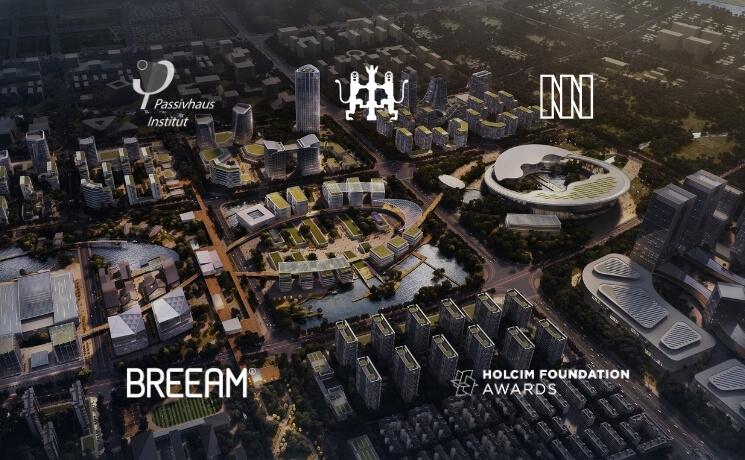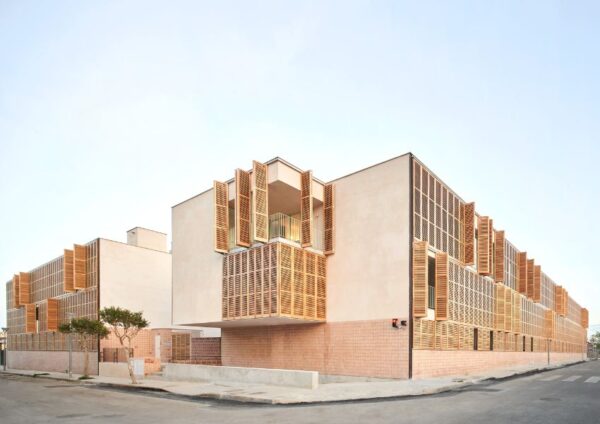
Best Architecture Sustainability Awards in 2025
October 7, 2025Sustainable architecture has moved from being a niche interest to a defining force in the built environment. Today, clients, governments, and communities expect architects to prioritize climate resilience, energy efficiency, and ecological balance. Awards play an important role in this shift. They recognize forward-thinking firms and highlight projects that set new standards for sustainable design.
If you are an architect, designer, or developer, these awards can do more than validate your work. They can amplify your reputation, build trust with clients, and place your projects on a global stage. This guide explores the most respected architecture sustainability awards in 2025, with a special spotlight on the sustainability categories within the Architecture MasterPrize (AMP).
Why Sustainability Awards Matter in Architecture
Awards dedicated to sustainability matter for several reasons. First, they act as independent proof of a firm’s commitment to environmental responsibility. In competitive bidding, that credibility can set you apart.
Second, awards often attract media coverage and industry recognition. Winning or even being shortlisted can open doors to publications, exhibitions, and speaking opportunities. This visibility strengthens your position as a leader in sustainable design.
Finally, sustainability awards often provide practical benefits. They can support funding applications, help secure planning approval, and reassure clients that your projects meet the highest ecological standards. For firms aiming to showcase both design excellence and environmental stewardship, these awards are strategic tools as much as they are accolades.
Globally Recognized Sustainability Awards
1. Holcim Awards for Sustainable Construction
The Holcim Awards for Sustainable Construction are among the world’s most prestigious honors for sustainable design. Organized by the Holcim Foundation, the awards recognize projects that combine architectural excellence with strong environmental, social, and economic performance. Submissions are judged on innovation, scalability, and measurable sustainability outcomes, from reducing carbon footprints to improving community resilience.
With a global reach and regional competitions, the Holcim Awards highlight projects of all scales, from experimental prototypes to large urban developments. Winning an award not only demonstrates leadership in sustainable construction but also provides international visibility and credibility within the architecture and design community.
2. Sustainable Architecture Awards by Architecture MasterPrize
The Architecture MasterPrize (AMP) has built a global reputation for celebrating excellence across all design disciplines. Within AMP, the Green and Sustainability categories recognize projects that successfully merge architectural creativity with environmental responsibility.
What makes AMP’s sustainability recognition unique is its dedicated focus. Unlike broader awards where sustainability is only a subcategory, AMP ensures that ecological innovation takes center stage. Entries span diverse project types, from residential housing to urban-scale developments, and the award welcomes submissions from both established practices and emerging firms.
In 2024, the Architecture MasterPrize introduced the Social Impact Project of the Year award for the first time, further emphasizing the importance of sustainable building practices and projects that deliver significant social value. The inaugural award was presented to F-AM Arquitectes for their outstanding work on “54 Social Housing in Inca, Mallorca.”

Social Impact Project of the Year award-winner: 54 social housing in Inca, Mallorca, Balearic Islands by F-AM Arquitectes (photo by José Hevia)
3. RIBA International Prize Sustainability Recognitions
The RIBA International Prize Sustainability Recognitions honor projects that exemplify both design excellence and environmental responsibility on a global stage. Awarded by the Royal Institute of British Architects, these recognitions highlight buildings that demonstrate measurable progress in areas such as carbon reduction, energy efficiency, material innovation, and community benefit. Sustainability is integrated into RIBA’s judging process, ensuring that projects are evaluated not only for aesthetics but also for their contribution to a more resilient future. Being recognized by RIBA provides worldwide prestige, media attention, and validation from one of the most respected institutions in architecture and sustainable design.
Specialized Sustainability Awards
Beyond the large global prizes, several niche awards recognize specialized achievements:
4. Passive House Awards
The Passive House Awards celebrate projects that achieve outstanding performance in energy efficiency and comfort using the Passive House standard. Organized by the Passive House Institute, the awards recognize buildings that minimize energy demand through advanced insulation, airtightness, and passive design strategies such as solar gain and natural ventilation. Submissions range from residential homes to large-scale public and commercial projects, all demonstrating how sustainable design can be practical, affordable, and aesthetically compelling. Winning a Passive House Award signals leadership in ultra-low-energy architecture and highlights a commitment to reducing carbon emissions, improving occupant well-being, and setting new benchmarks for sustainable construction.
5. Living Building Challenge Awards
The Living Building Challenge Awards honor projects that achieve the most rigorous standard of sustainable design: the Living Building Challenge. Administered by the International Living Future Institute, these awards recognize buildings that go beyond efficiency to deliver regenerative outcomes. Winning projects often generate more energy than they consume, harvest and recycle their own water, and use non-toxic, locally sourced materials. Submissions must also show positive cultural and community impact, reflecting the program’s holistic vision of sustainability. Earning recognition in the Living Building Challenge Awards positions architects and developers as pioneers in regenerative design and champions of a truly sustainable future.
Recognisable Regional Sustainability Awards
6. AIA COTE Top Ten Awards
The AIA COTE Top Ten Awards are the American Institute of Architects’ highest honor for sustainable design. Organized by the Committee on the Environment (COTE), the awards recognize projects that achieve a balance of design excellence, environmental performance, and social impact. Each year, ten winning projects are selected based on metrics such as energy use, carbon footprint, water efficiency, wellness, and community contribution. Submissions are judged on how well they integrate sustainability into every stage of design and operation. Winning a COTE Top Ten Award positions architects as leaders in climate-responsive design and demonstrates a holistic approach to sustainable architecture.
7. BREEAM Awards
The BREEAM Awards celebrate projects, organizations, and professionals who set new benchmarks in sustainable building practices using the BREEAM certification standard (Building Research Establishment Environmental Assessment Method). As one of the world’s longest-established sustainability frameworks, BREEAM assesses buildings on energy, water, materials, health, pollution, and ecological impact. The awards highlight exceptional certified projects that go beyond compliance to deliver measurable environmental and social value. Categories span new builds, refurbishments, and infrastructure. Recognition in the BREEAM Awards signals leadership in sustainable development, enhances international credibility, and showcases a commitment to creating buildings and communities that are resilient, efficient, and future-ready.
What Judges Look for in Sustainable Architecture
While criteria vary, several themes consistently emerge across sustainability awards. Understanding these priorities allows you to tailor submissions so they resonate more strongly with juries.
Here’s what judging panels usually look for:
| Criteria | What It Means | What Judges Expect | Examples |
| Energy Efficiency | Reducing energy demand and integrating renewables. | Demonstrated performance data (kWh/m²/year, renewable % of energy supply). | Passive design strategies, solar PV integration, net-zero energy buildings. |
| Material Choices | Using low-impact, recycled, or sustainable materials. | Evidence of lifecycle assessment, sourcing transparency, and carbon footprint reduction. | Reclaimed timber, low-carbon concrete, cradle-to-cradle certified products. |
| Climate Resilience | Designing for future climate risks. | Strategies addressing flooding, heat stress, drought, or extreme weather events. | Green roofs for stormwater management, shading systems for heat resilience. |
| Human Wellness | Prioritizing occupant health and comfort. | Features that improve indoor air quality, natural light, acoustics, and connection to nature. | Biophilic design, WELL-aligned standards, operable windows for ventilation. |
| Community & Social Value | Ensuring designs benefit society and local communities. | Projects that foster inclusivity, accessibility, cultural relevance, and social equity. | Affordable housing, community centers, designs co-created with local stakeholders. |
| Innovation & Scalability | New approaches that can influence the broader industry. | Designs that showcase replicable models or technologies with industry-wide impact. | Modular net-zero homes, AI-driven energy optimization, regenerative urban developments. |
| Design Excellence | Aesthetics and form complementing sustainability. | Architecture that is not only sustainable but also visually compelling and culturally resonant. | Landmark sustainable museums, civic buildings, or mixed-us |
How to Maximise Your Chances of Winning
Success in sustainability awards requires more than just strong design. Here are some ways to increase your chances:
- Document performance metrics. Numbers matter. Provide data on carbon reductions, energy savings, and lifecycle assessments.
- Tell the story. Go beyond technical details by explaining how your design improves lives and communities. Judges want to see human impact alongside ecological gains.
- Use professional visuals. Strong photography, drawings, and diagrams help communicate your design intent clearly.
- Align with criteria. Each award has unique judging priorities. Tailor your submission to match them.
- Choose your best work. Submitting fewer, stronger projects is better than spreading yourself thin.
- Focus on design and performance. Judges increasingly reward projects that marry beauty with measurable sustainability outcomes.
For the Architecture MasterPrize, this combination of artistry and responsibility is at the heart of what the award seeks to celebrate.
Trends in Sustainability Awards (2025 Edition)
Several trends are shaping how sustainability awards evaluate projects:
- Regenerative design is moving beyond “less harm” to actively restoring ecosystems.
- Climate adaptation is critical, with greater focus on designs that address resilience to extreme weather.
- Digital tools such as AI and GIS are being recognized for their role in optimizing sustainability outcomes.
- Social equity is gaining prominence, with judges rewarding projects that address inclusivity and cultural relevance.
These shifts show that sustainability in architecture is broadening beyond technical performance into cultural, ecological, and social dimensions.
Conclusion
Sustainability awards are far more than trophies. They are markers of leadership in a world where the built environment plays a pivotal role in addressing climate change. Winning recognition in this space signals to clients, partners, and communities that you are serious about shaping a responsible future.
The Architecture MasterPrize’s sustainability categories stand out because of their global reach and dedicated focus on ecological innovation. They highlight projects that not only perform well but also inspire through design.
If you are preparing submissions this year, consider how your projects can demonstrate measurable impact, strong storytelling, and design excellence. Doing so will not only increase your chances of recognition but also strengthen your practice in the eyes of the world.
